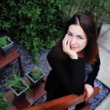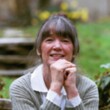Where the god of love hangs out: fiction
Description
More Details
Table of Contents
From the Book - First edition.
Excerpt
Similar Titles From NoveList
Similar Authors From NoveList
Published Reviews
Booklist Review
After her best-selling historical novel Away (2007), Bloom returns to the form that made her famous, the short story. In her third collection, as in all of her books, love is the mysterious, gravitational force that rules her hapless, oddly noble characters. Of course, love is the theme of most fiction. What makes Bloom's serrated stories so keen is her penetrating insights into the ambiguity, orneriness, confusion, and obsession that make expressions of love so ludicrous, treacherous, and profound. In the perfectly pitched title story, a woman comes clean about her past to her unfazed father-in-law, who harbors his own hidden desire. Bloom returns to a biracial family introduced in earlier works and brilliantly continues the highly charged saga of Julia and her stepson, Lionel. The best of this collection of bittersweet tales of psychic pain are about tender William and vinegary Clare, who, though on in years and married to fine spouses, can no longer ignore the fact that they are only completely at ease with each other. Bloom's stories are emotionally precise, mordantly funny, and beautifully distilled.--Seaman, Donna Copyright 2009 Booklist
Publisher's Weekly Review
Bloom's latest collection (after novel Away) looks at love in many forms through a keenly perceptive lens. Two sets of stories that read much like novellas form the book's soul; the first of which revolves around two couples-William and Isabel, Clare and Charles-and begins with Clare and William falling into an affair that endures divorces, remarriage and illness. Bloom has an unsettling insight into her character's minds: Clare's self-disgust is often reflected in her thoughts about William, demonstrating the complexity of their attraction as their comfort with each other grows, until she finally accepts the beauty of what they have-albeit too late. The second set of stories, featuring Lionel and Julia, is more complicated; the death of Lionel's father propels Lionel and Julia together in a night of grief, remarkable (and icky) mostly because Julia is Lionel's stepmother and his father's widow. As years go by, it is unclear whether Lionel's difficulties are due to that indiscretion, but watching Bloom work Lionel, Julia and her son through the rocky aftermath is a delight. The four stand-alone stories, while nice, have a hard time measuring up against the more immersive interlinked material, which, really, is quite sublime. (Jan.) (c) Copyright PWxyz, LLC. All rights reserved
Library Journal Review
Bloom's new collection features two sets of connected stories that characterize the far-reaching trajectory of love within memorable groups of characters. In one grouping, William and Clare, literature professors in two parallel marriages, are drawn to each other in middle age after years as highly compatible friends. In the other, Lionel, the adolescent son of a well-known jazz musician, and Julia, recently widowed from that musician, are forced to redefine their relationship in the face of the man's death. In both sequences, realignments between children and adults are unpredictable but deeply felt. Verdict The characters from the two sets of linked stories are so engaging that the inhabitants of the four strong stand-alone entries feel like mere walk-ons. Readers of Bloom's earlier collections will be happy to reencounter some of the characters they've already met, as two of the stories are from Come to Me and A Blind Man Can See How Much I Love You. An eminently readable new collection. [See Prepub Alert, LJ 9/1/09.]-Sue Russell, Bryn Mawr, PA (c) Copyright 2010. Library Journals LLC, a wholly owned subsidiary of Media Source, Inc. No redistribution permitted.
Kirkus Book Review
Nine uncollected stories plus three that appeared in earlier collections are interestingly arranged and recombined in this latest from the Manhattan psychotherapist and versatile author (Away, 2008, etc.). The first four chronicle the adulterous relationship, then the sad late-life marriage of 50-somethings Clare and William, who find amorous moments together during shared vacations and visits to and with each other's unsuspecting spouses. Bloom's plainspoken, witty prose is displayed to fine effect in unglamorous snapshot revelations of self-indulgent, heart-attack-waiting-to-happen William and weary, unillusioned Clare (who sardonically asks herself, "What has it ever been between them but the rubbing of two broken wings?"). Four other interrelated stories span years of familial and less conventional love between Julia, a music journalist who becomes a black jazz musician's third wife, then his widow, and his son and namesake Lionel, a biracial heartthrob who is drawn much too closely into intimacy with his grieving stepmother. Except for the last of these four, in which Lionel is both further injured and paradoxically healed by his weakness and guilt, this is an original and moving dramatization of the complex burdens of togetherness and independence, soaring ambition and muted resignation. The remaining unrelated storieswhich seem to belong in another bookare a mixed bag. "Permafrost" suggestively links a hospital social worker's compassionate identification with a young girl's sufferings to the former's lifelong fascination with the historic Shackleton Arctic expedition. "Between here and here" and "By-and-By" deal somewhat melodramatically with family-related traumas. But in the wry title story, stoic survival is persuasively incarnated in a saturnine widower who takes botched relationships, failing bodily functions, even "women OD'ing on coke in front of their children" phlegmatically in stride. Not Bloom at her very best, but impressive enough confirmation of this clever writer's ability to challenge the way we see ourselves and to show us as we are. Copyright Kirkus Reviews, used with permission.
Booklist Reviews
After her best-selling historical novel Away (2007), Bloom returns to the form that made her famous, the short story. In her third collection, as in all of her books, love is the mysterious, gravitational force that rules her hapless, oddly noble characters. Of course, love is the theme of most fiction. What makes Bloom's serrated stories so keen is her penetrating insights into the ambiguity, orneriness, confusion, and obsession that make expressions of love so ludicrous, treacherous, and profound. In the perfectly pitched title story, a woman comes clean about her past to her unfazed father-in-law, who harbors his own hidden desire. Bloom returns to a biracial family introduced in earlier works and brilliantly continues the highly charged saga of Julia and her stepson, Lionel. The best of this collection of bittersweet tales of psychic pain are about tender William and vinegary Clare, who, though on in years and married to fine spouses, can no longer ignore the fact that they are only completely at ease with each other. Bloom's stories are emotionally precise, mordantly funny, and beautifully distilled. Copyright 2009 Booklist Reviews.
Library Journal Reviews
Readers everywhere will be happy to see Bloom's latest book since her best-selling Away and even happier that it's a collection of short stories, a genre in which she thrives. With a five-city tour; book-club pitches. Copyright 2009 Reed Business Information.
Library Journal Reviews
Bloom's new collection features two sets of connected stories that characterize the far-reaching trajectory of love within memorable groups of characters. In one grouping, William and Clare, literature professors in two parallel marriages, are drawn to each other in middle age after years as highly compatible friends. In the other, Lionel, the adolescent son of a well-known jazz musician, and Julia, recently widowed from that musician, are forced to redefine their relationship in the face of the man's death. In both sequences, realignments between children and adults are unpredictable but deeply felt. VERDICT The characters from the two sets of linked stories are so engaging that the inhabitants of the four strong stand-alone entries feel like mere walk-ons. Readers of Bloom's earlier collections will be happy to reencounter some of the characters they've already met, as two of the stories are from Come to Me and A Blind Man Can See How Much I Love You. An eminently readable new collection. [See Prepub Alert, LJ 9/1/09.]—Sue Russell, Bryn Mawr, PA
[Page 62]. Copyright 2008 Reed Business Information. Copyright 2009 Booklist Reviews.Publishers Weekly Reviews
Bloom's latest collection (after novel Away) looks at love in many forms through a keenly perceptive lens. Two sets of stories that read much like novellas form the book's soul; the first of which revolves around two couples—William and Isabel, Clare and Charles—and begins with Clare and William falling into an affair that endures divorces, remarriage and illness. Bloom has an unsettling insight into her character's minds: Clare's self-disgust is often reflected in her thoughts about William, demonstrating the complexity of their attraction as their comfort with each other grows, until she finally accepts the beauty of what they have—albeit too late. The second set of stories, featuring Lionel and Julia, is more complicated; the death of Lionel's father propels Lionel and Julia together in a night of grief, remarkable (and icky) mostly because Julia is Lionel's stepmother and his father's widow. As years go by, it is unclear whether Lionel's difficulties are due to that indiscretion, but watching Bloom work Lionel, Julia and her son through the rocky aftermath is a delight. The four stand-alone stories, while nice, have a hard time measuring up against the more immersive interlinked material, which, really, is quite sublime. (Jan.)
[Page 33]. Copyright 2009 Reed Business Information.































